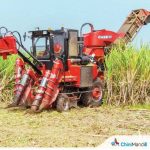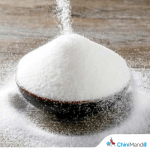Insight Focus
Thai farmers have burnt 8% more cane this season compared to 2021/22. Harvesting burnt cane is less labour intensive. Burning the cane has also boosted the sucrose content.
Thai sugar cane farmers have delivered around 8% more burnt cane to mills compared to last season. This is bad for local air pollution but it has been a benefit to sugar yields.
Labour Shortages Mean More Burning
Thai sugar farmers are facing a labour shortage this season. This is forcing growers to resort to greater use of cane burning as means of mitigating this shortfall, particularly in Khon Kaen province.
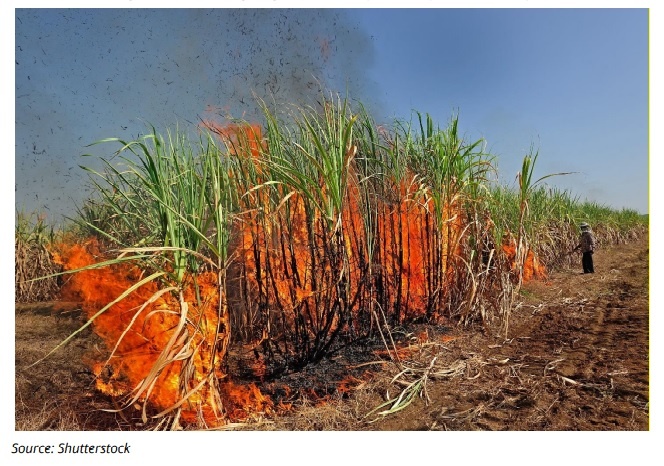
Burning cane removes excess biomass meaning labourers have better access to the cane. But it’s been discouraged in recent years due to its detrimental effects on air quality. Harvesting the cane fresh is more labour intensive.

To discourage the practice mills deduct THB 30/mt from the returns of farmers who deliver burnt cane, awarding it to those who deliver fresh cane instead. Harvesting unburnt cane is also around 3 times as expensive as burnt cane.
As recently as the 2017/18 season over 60% of sugar cane delivered to mills was burnt, by 2021/22 this had fallen to under 30%. This season it has already reached 30% and is expected to climb further.
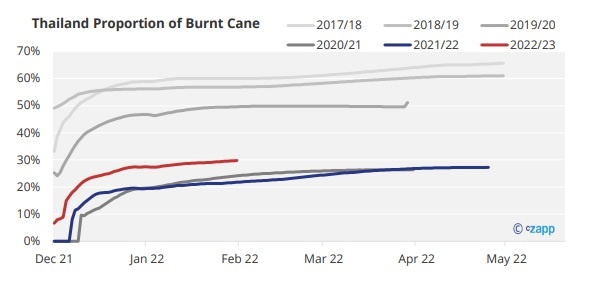
How Does the Harvesting Process Affect Sugar Production?
So far in 2022/23 around 2.5m tonnes more sugar cane has been crushed compared to the same point last season, this matches up with expectations of a slightly larger cane crop overall compared to 2021/22.
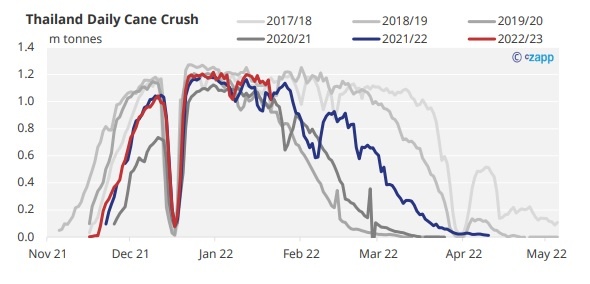
How the cane is harvested shouldn’t have any meaningful effect to the amount of cane that’s crushed since only the excess material is burned, however whether the cane is burnt or fresh can affect sucrose content.
In Thailand the sucrose content (as a percentage of the weight of the cane) is called the Commercial Cane Sugar (CCS), it is a unit to indicate the level of sweetness in cane.
In general, if delivered to the mills quickly (within 24 hours) burnt cane will have a higher CCS than fresh cane, however the CCS of burnt cane will degrade faster than fresh cane. Thus, if delivered as late as 48-72 hours after harvest, fresh cane may have a higher CCS than burnt.
CCS in 2022/23 is the highest in at least the last 6 years, now at over 12.9%, we think the higher proportion of burnt cane has helped contribute to this.
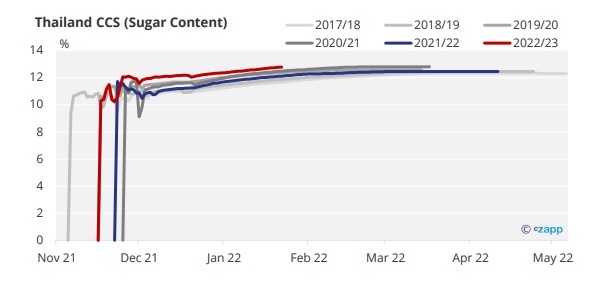
High CCS is also partly due to a slow start to the season in central areas of Thailand where fields took longer to dry out (moist soil is detrimental to sucrose content). Recent cold weather (which causes stress to the cane) has also been beneficial.
For more articles, insight and price information on all things related related to food and beverages visit Czapp.









